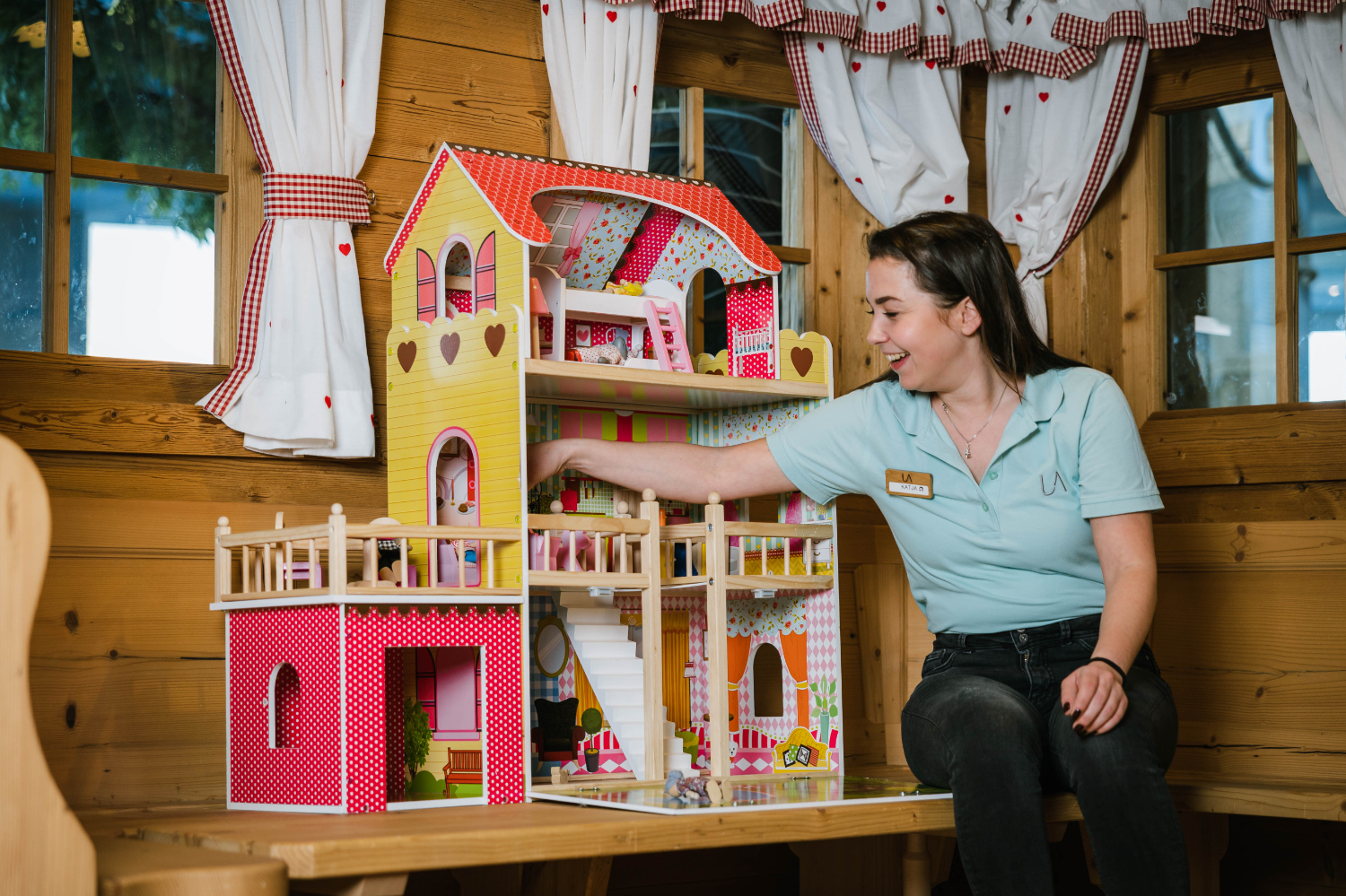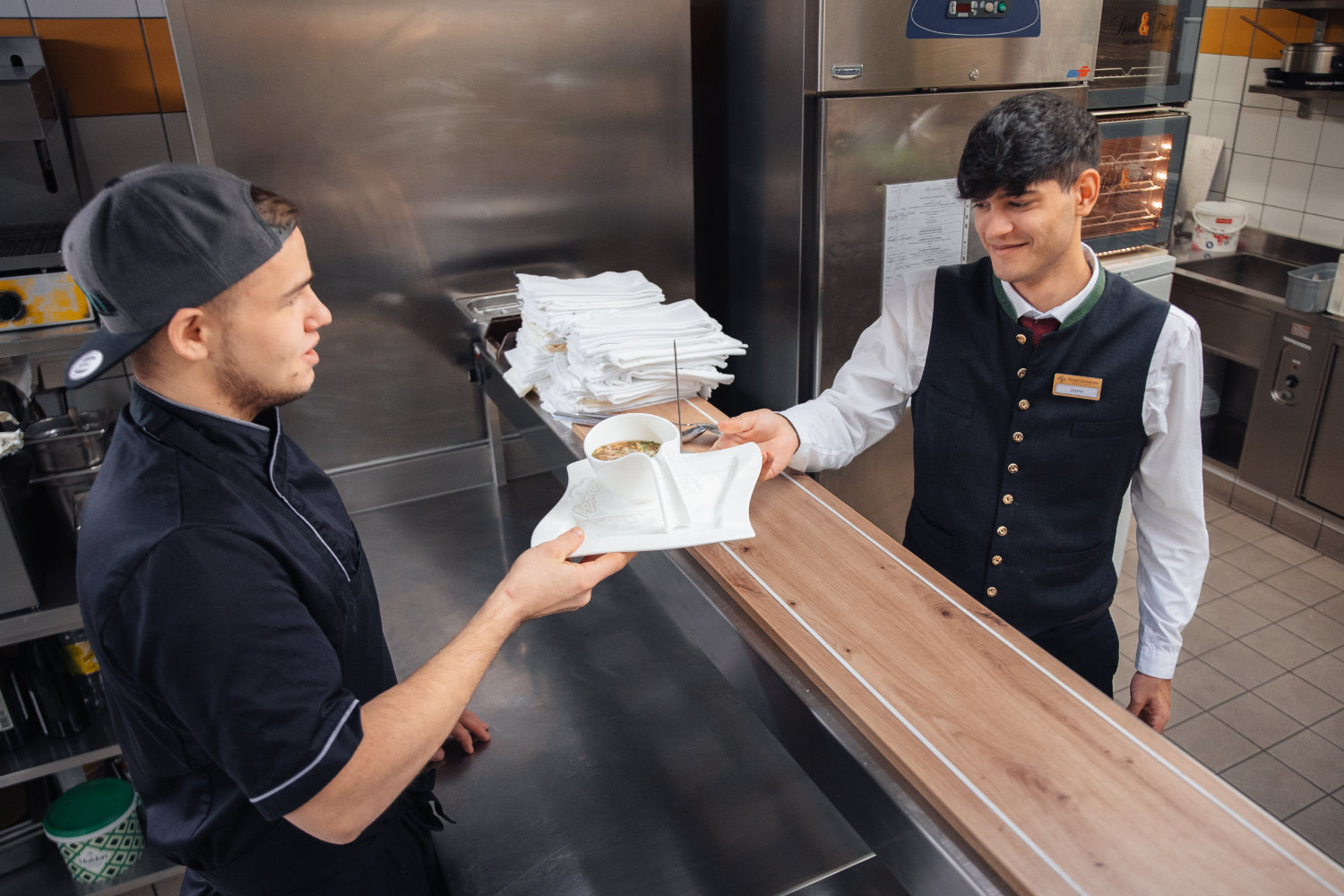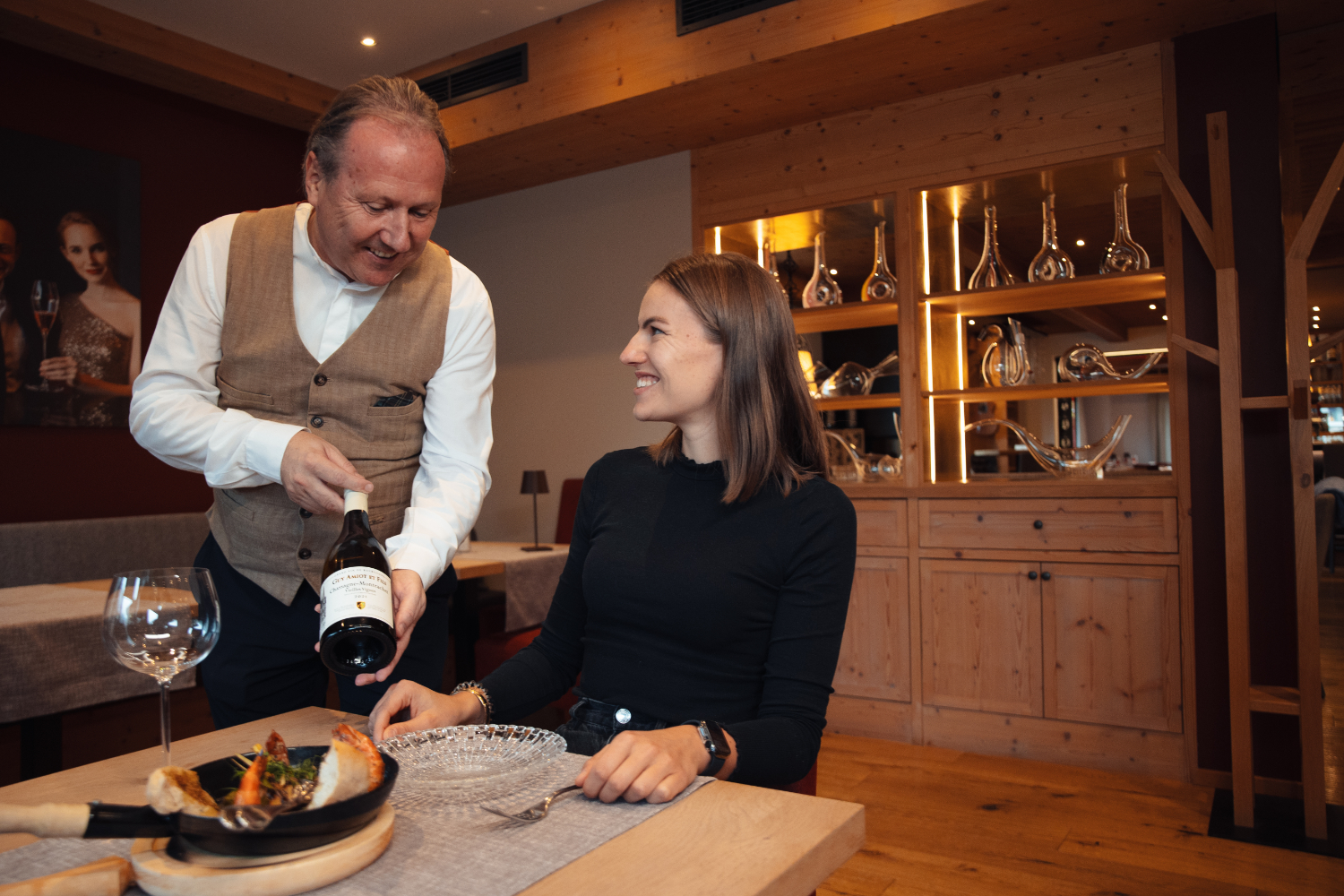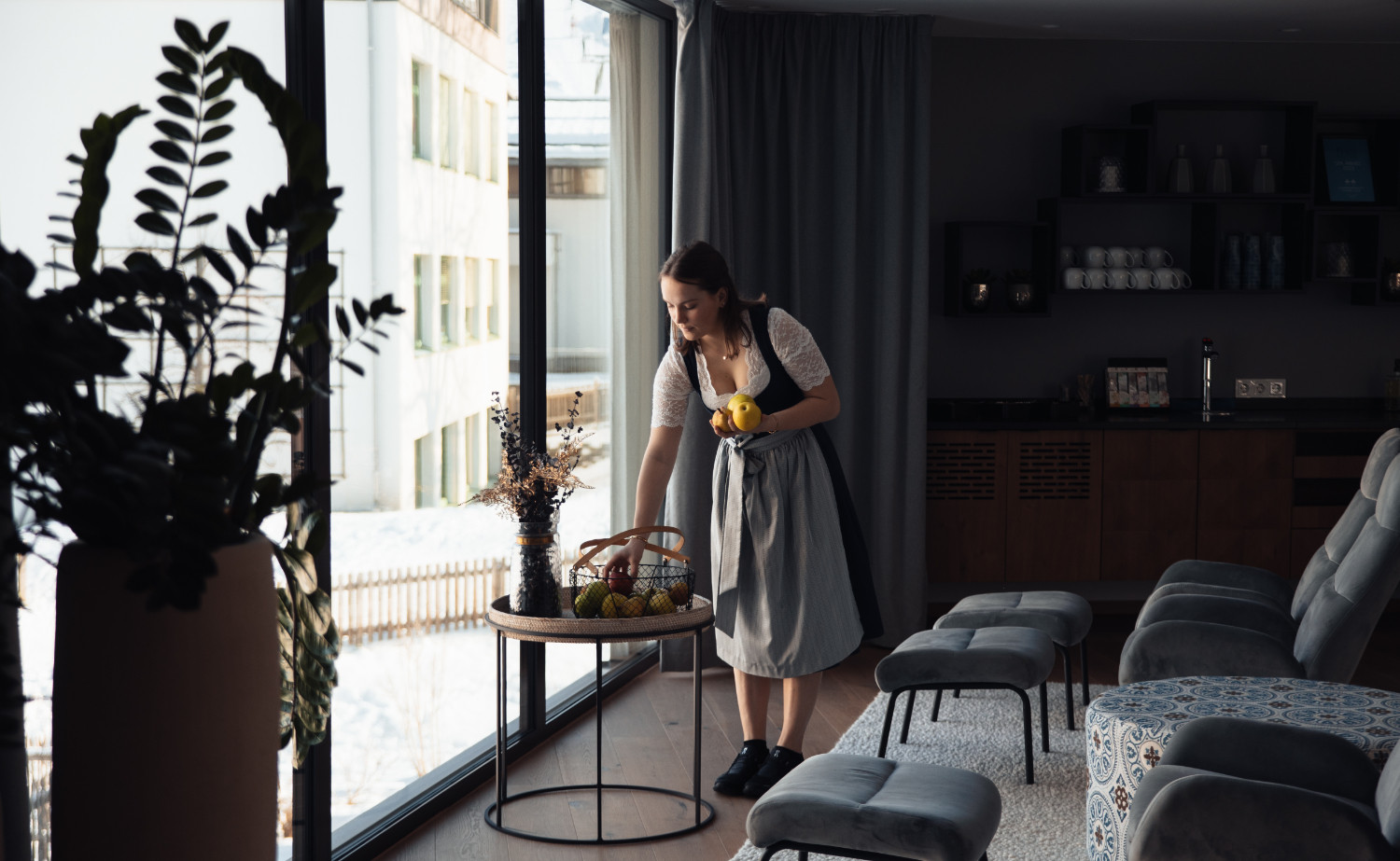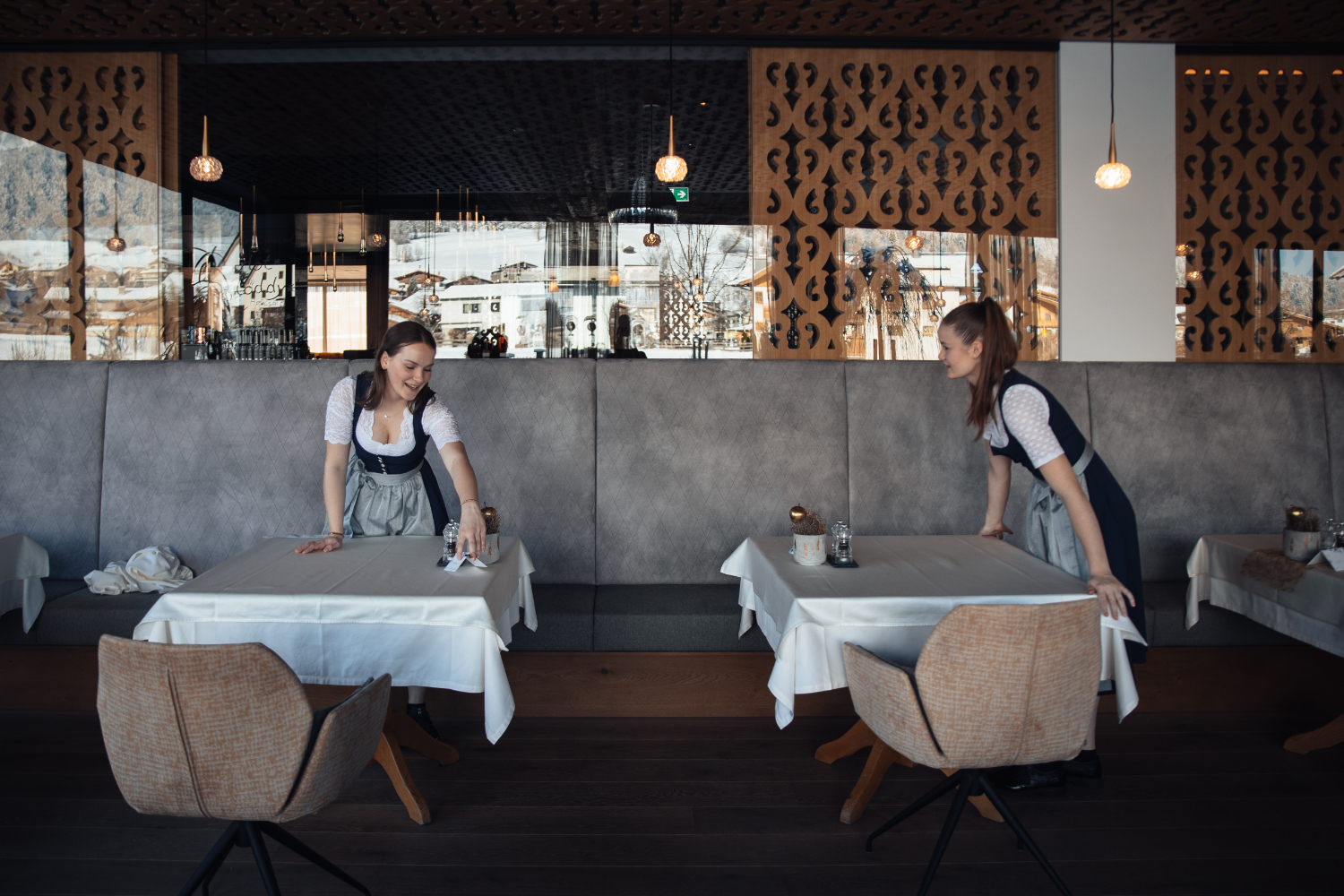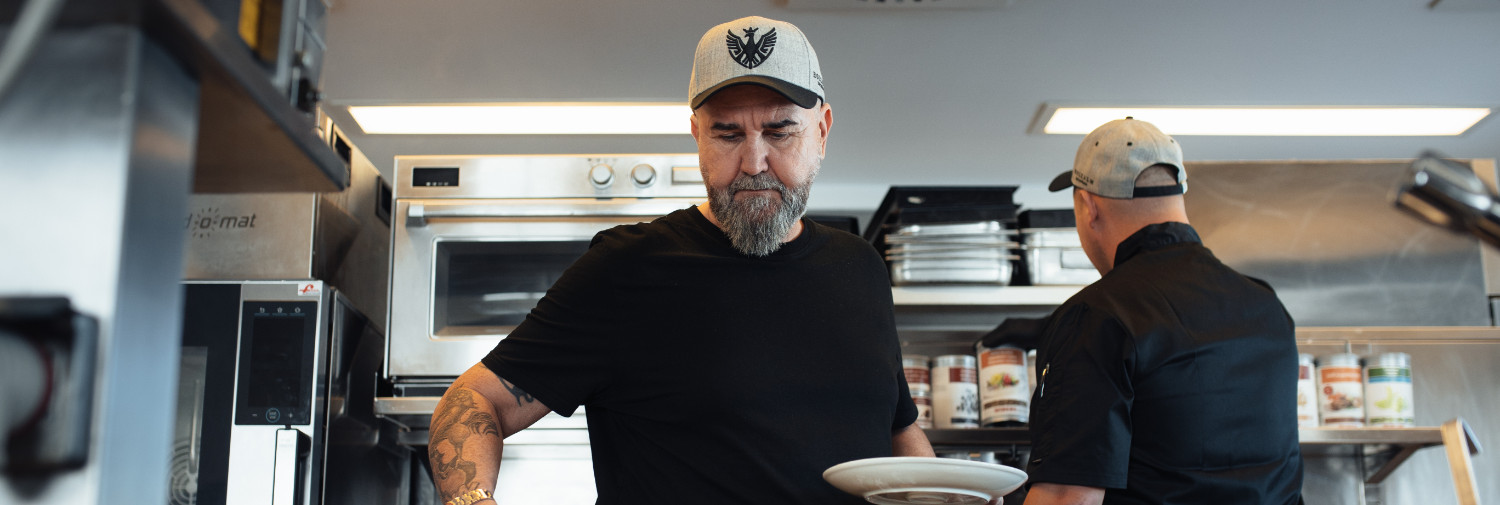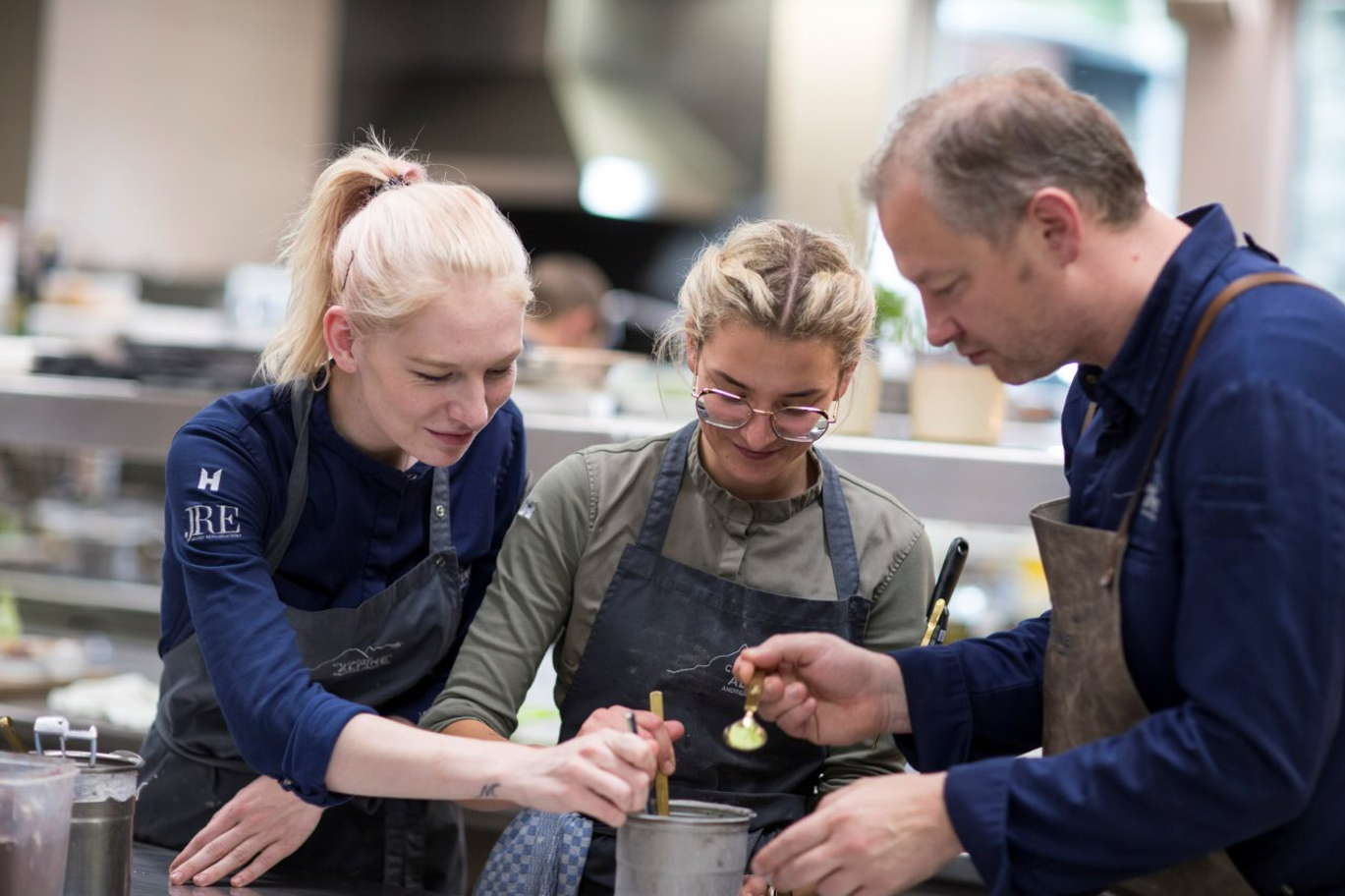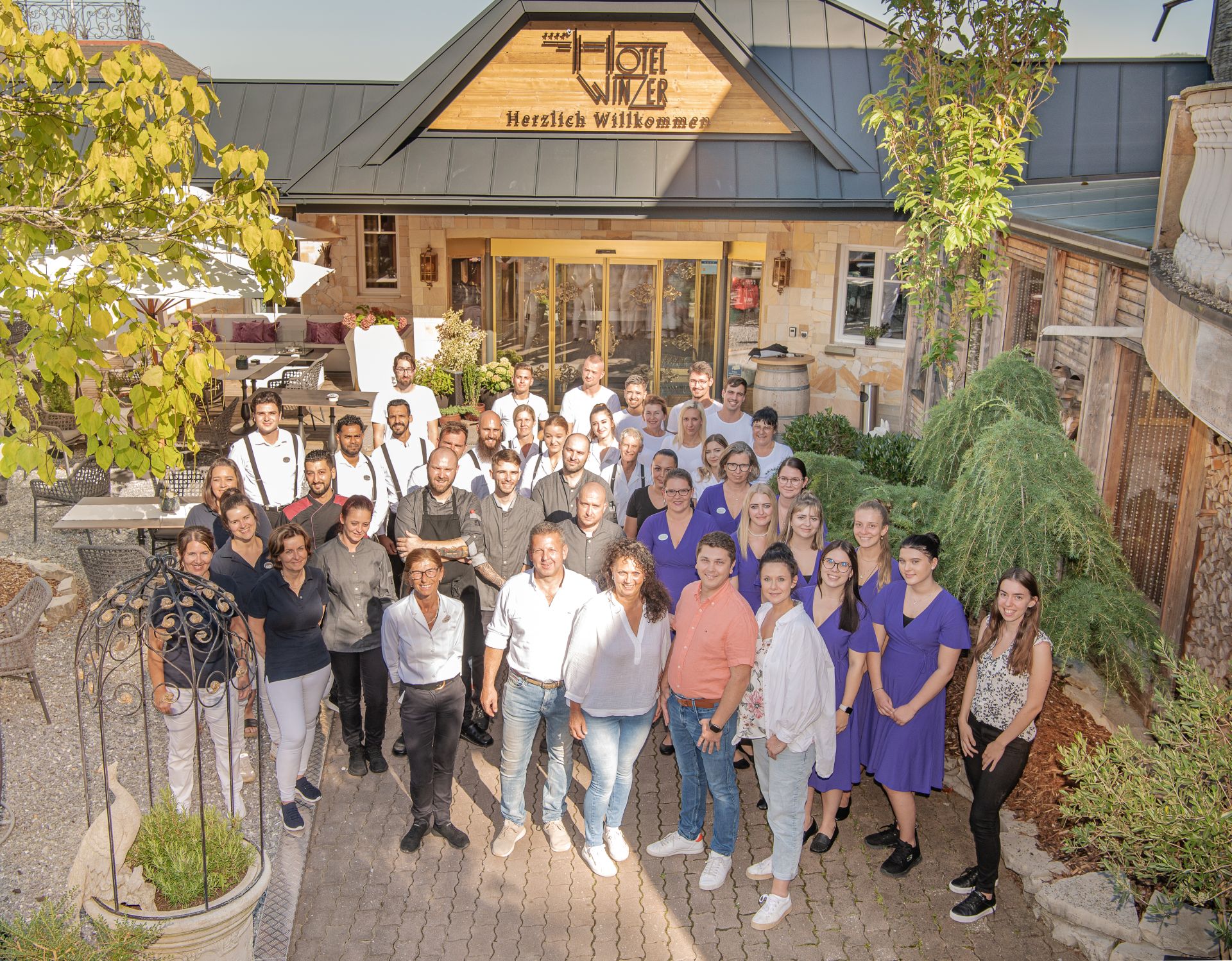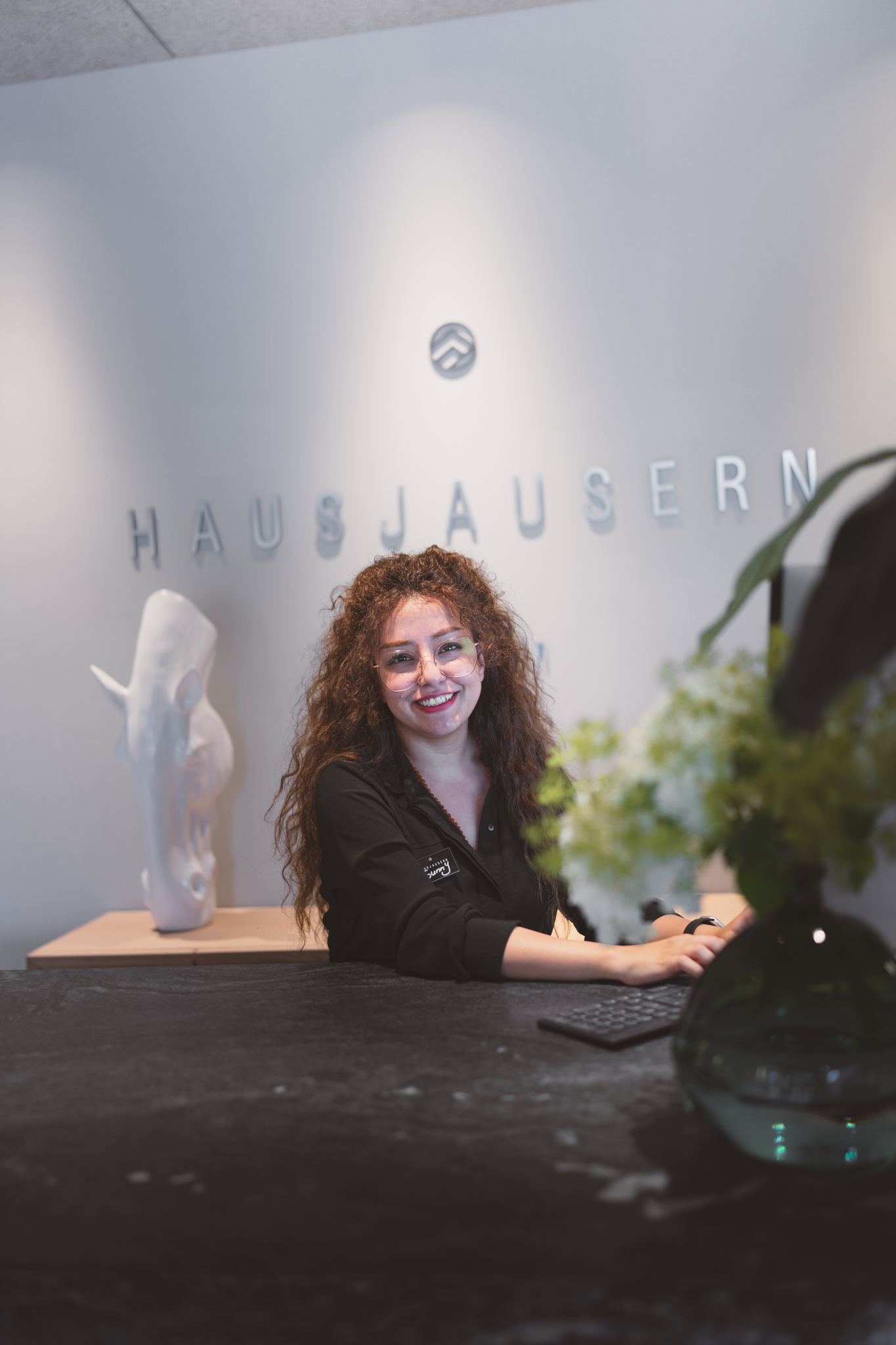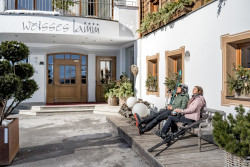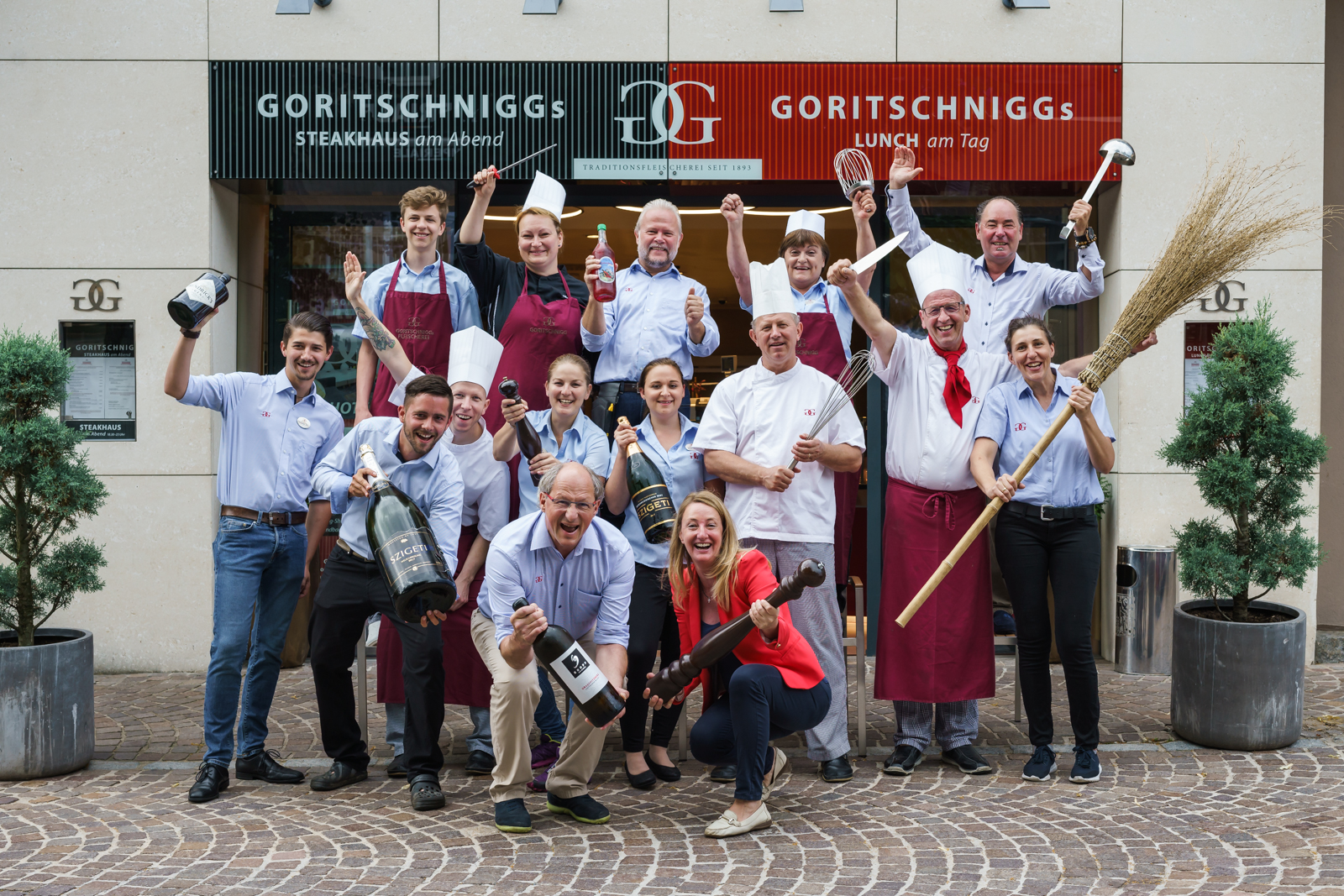
How to become a service professional
Serving principles for beginners
Service can be the icing on the cake of the dining experience or damage the restaurant's reputation. As a service employee, you are largely responsible for how comfortable your guests feel. Do you want to make sure that they leave the restaurant with a smile and that you get a hefty tip? Then we have a few helpful tips for you!
By the way: in service, you are one of the people who feel the guest's moods the most and still have to remain nice and polite at all times. Unfortunately, we can't provide you with nerves of steel. However, HOGASTJOB has already collected a few ideas for you on how to respond professionally to guest complaints.
The basics of servicing
Being a waiter isn't easy - and it's usually twice as hard for newcomers! The old hands often manage serving guests, carrying plates and cashing up with ease. This makes it clear that service - like so many things in life - is a matter of practice.
We have put together a few tips for you to help you get started in the restaurant business. Experienced service aces will already know them, but new employees can definitely pick up a few tricks.
Be friendly & polite
This is probably the most important principle of service. A charming smile and a lot of politeness can make up for many minor slip-ups. If you give the guest the feeling that you are concerned about their well-being, (almost) nothing can go wrong.
Good to know: According to studies, waiters who smile openly at their guests receive an average of 48 cents more in tips. Those who smile with their mouths closed still receive 20 cents more than their "stoic" colleagues.
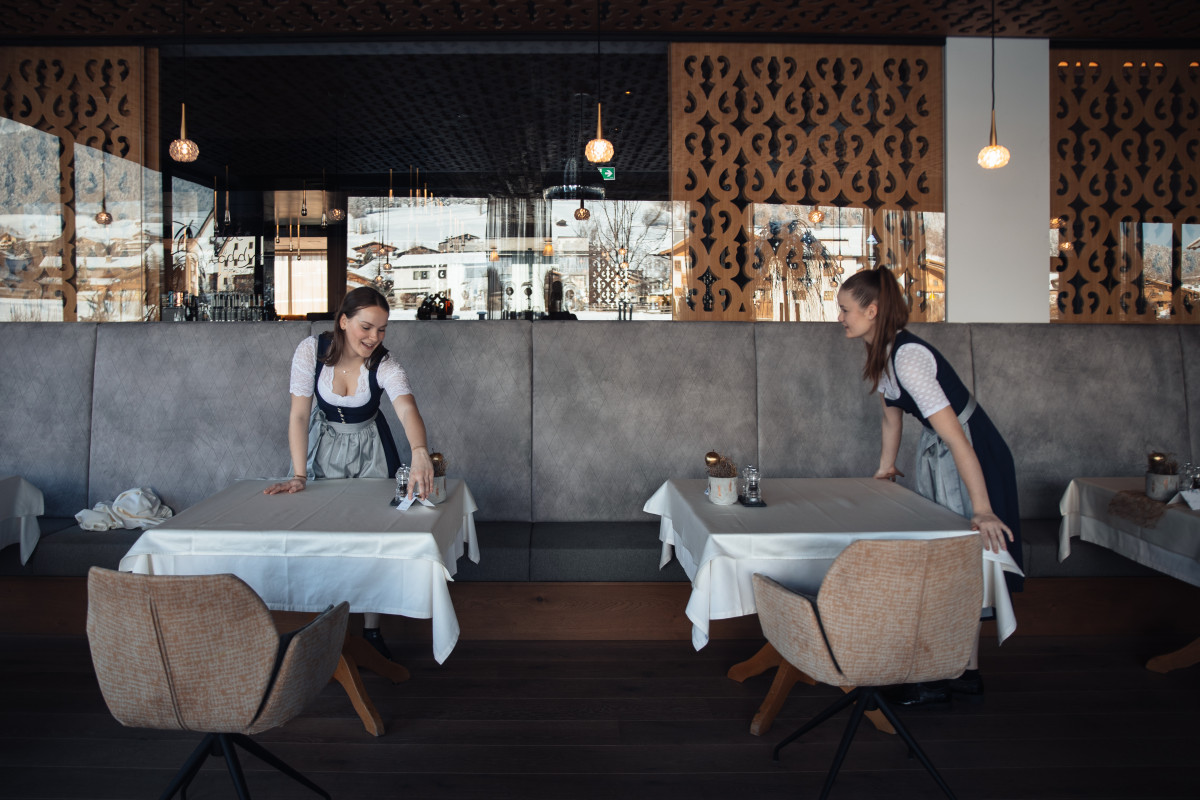
A beautiful table is half the battle
Set the table, re-set the table, lay the table ... What's the difference? It's simple: setting the table is the first step. This happens before the guest enters the restaurant. The table is reset as soon as the guest changes seats or when a guest joins or cancels. The table should always be reset quickly and unobtrusively. Setting the table is when the guest has already ordered and is given a special fish or steak knife, for example.
The greeting
Even if you are nervous at first, always approach the table and therefore your guests with a friendly look. Greet them and perhaps even introduce yourself. For example, you could say: "Good evening. Nice to welcome you here. My name is ... and I'll be looking after you today." The greeting varies, of course - but the smile remains!

The right timing
The first thing you do immediately after welcoming your guests is offer them their drinks. Ideally, you should also have the menus with you. After you have taken the drinks orders, this is the perfect time to ask your guests if they would like to order something to eat. If they are not yet agreed or sure, go to the next table and return to the first table in a few minutes.
Bonus tip: Every guest feels safe and in good hands if you briefly repeat what they have ordered. This can add a few percent to the tip afterwards. You can find out how best to remember orders below!
Give the guest your full attention!
Always look at your guests when they order! Of course, that doesn't mean you should stare at them - it's all about a healthy balance! Guests often come to the restaurant in different moods. If you look the guest in the eye, you'll immediately notice what mood they're in. The better you learn to assess this, the better you can react to their mood. Do you notice that a guest is in a hurry? Then bring him the menu as quickly as possible and serve him quickly. A guest in a bad mood may be soothed with an aperitif on the house.
Be courteous - even to the little ones!
A small chocolate, a puzzle, something to color or the presentation of the children's menu: parents immediately notice something positive. They are often relieved when the little ones are occupied for a moment.
Be open to small talk, but not intrusive!
A quick chat about the weather, a bit of banter or the latest gossip from the social scene: some guests want to be entertained a little. Others prefer to be left in peace - which brings us back to attention. Knowing your guests is the key to giving them what they want. Satisfied and cheerful guests tip more on average.
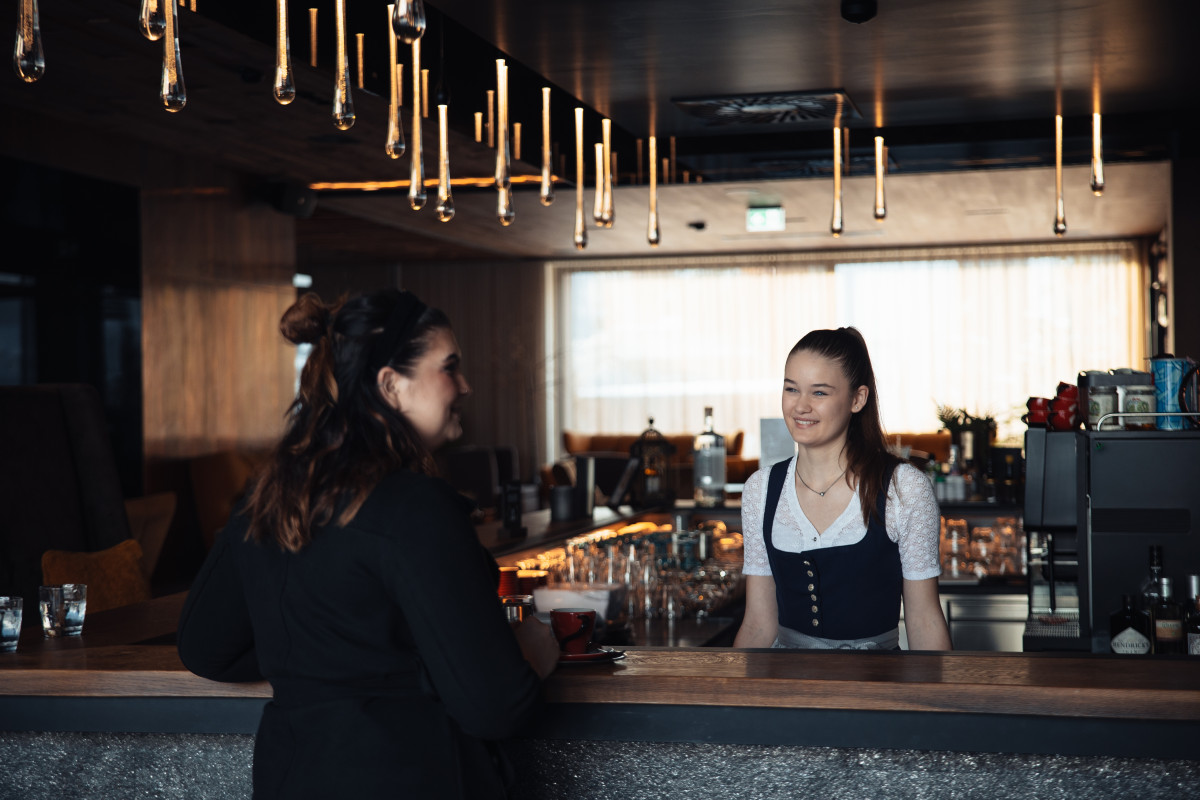
Serving the food
If possible, always bring food to the guests at a table at the same time. An exception is made for starters or if a guest explicitly asks for them because they want to leave early. By the way: Apart from plates and platters, serving items are brought on trays. If you have dishes on trays, they must not protrude beyond the sideboard. If you use glasses with a print, the print should face the guest (as the face of the glass, so to speak).
The right order
The principle of "ladies first" applies when serving. Old before young" is also a rule that should be adhered to. Exception: If there are small children at the table, they are served first. If there are guests of honor and regular customers in the house, serve them first. In larger groups, the hosts get their plates last.
As banal as it may sound, the following tip is important: When serving a table, please go clockwise and forwards around the table. Otherwise it can easily lead to collisions!
Service from the right or left?
You can serve from the right or left. But which side is used when? It's simple: plates and drinks are always placed and served on the guest's right. Side plates, bread plates and items that are used by several guests (such as finger bowls, waste plates, sauces, etc.) should be served from the left. When presenting plates, always do so from the left. You also present a good wine with the meal to the guests from the left.
Ask questions
When the main course has reached the guest, the questions begin. Is the guest satisfied? Can you bring him something else? Is the steak as it should be? Of course, you shouldn't get on your guests' nerves, but show them that you are present!
Ditch quickly
Be attentive! When your guests have obviously finished eating, take their plates away. But ask beforehand whether you are really allowed to do this. Before you serve another course, every plate must have left the table. After you have cleared the table, ask if the guests would like to see the dessert menu or if you can bring them another coffee.

Checkout & say goodbye
If you see that guests want to pay, then you need to be quick. Hardly anything is more frustrating for a guest than waiting for them to finally pay. As soon as you have collected the bill, thank them for their visit and say goodbye with a smile.
Insider tip: Add something sweet to the bill! A trick from psychology - the so-called reciprocity rule - says that when we receive something as a gift, we want to return the favor. If you're lucky, the guest will start tipping right away or write a positive review for the restaurant ..
Memory training: How to memorize orders!
As a waiter, you have to remember countless orders, and sometimes there are even special requests! For experienced service staff, remembering the drinks and food for six tables is no problem at all. But for newcomers and career changers, it can be quite a challenge. How do the professionals do it?
In some restaurants, service staff work with a notepad or Orderman. The whole thing is a lot easier with these little helpers. But you still have to work out a system for writing things down. You don't have time to write things down in the order flow! The order of the orders and who gets what can also become a problem. Especially if you don't want to have to keep asking the guests ..
A trick from practice
Some waiters memorize orders visually - that is, they internalize the place, the person and the drink in their mind's eye. Others use mnemonic devices. For example, you can make up a short story. This type of association is called "chunking". Waiters memorize small pieces of information (the person, the table number and the order) and combine these pieces into a story or a sentence. The crazier, the better. If your story makes you smile, you'll remember it more easily! The most important thing, however, is that you create a link that you remember.
For example: The lady at table 8 orders a glass of white wine. The gentleman next to her orders a whiskey and a glass of water. The story could be: A couple is arguing on the eighth floor of the Empire State Building. The man pours himself a glass of whiskey. The wife gets a glass of white wine and pours a glass of water over her husband's head.
You're sure to find out for yourself over time which method suits you best. Here too, practice makes perfect!
Well? Fancy some service?
Is a job in service exactly what you're looking for and do you really want to prove yourself in this profession? Then take a look at the HOGASTJOB career portal! There you'll find all vacancies in the service sector - there's sure to be something suitable for you!
